Recreating the Country blog |
 Dangerous fires were rare in Australia before the First Fleet Dangerous fires were rare in Australia before the First Fleet It’s the 2020 summer fire season - Australia shouldn't be burning like this You might be expecting this blog to be about climate change, it could be, but it's not. Its about how we need to work with nature and manage our native bush differently to get ready for the annual fire season. We need to change the way we prepare for the summer because its clear that our current strategies are tragically failing us. Partly the solution lies in fire safe design of rural houses and gardens, but the ultimate solution will be found through adopting Traditional Owner cool burning methods of managing the bush. Here is a link to an 11 minute video of a Traditional Owner burn near Tathra, NSW. You can watch the indigenous team conduct a burn as they explain the philosophy and science behind what they're doing. Its definitely worth watching to the end. My radio transmits the troubled voices of the people who are living through the fires. They are shocked but still remarkably resilient and upbeat. Lives lost, houses lost, treasured animals and possessions lost, the bush is blackened and lifeless, yet they’re going to carry on. This annual bushfire tragedy and how we respond is part of our national identity. We’re a tough and irrepressible people and we’re proud of that The fire season started very early this year and by New Year’s Day there have been major bushfires in every state. Starting in Queensland and New South Wales in late October and slowly spreading south. By the start of 2020 Victoria and Tasmania were in the fires deadly grip. In November there were also catastrophic fires near Perth, WA and in the Adelaide hills. They continue to burn. Brisbane, Sydney, Melbourne and Canberra are blanketed with smoke. The ABC news reported on New Year’s Day that Canberra had the worst air quality of any city in the world. That’s worse than New Delhi, India or Lahore, Pakistan. 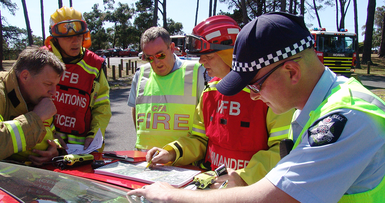 Victorian Ministers and fire chiefs launching the annual fire readiness week. Victorian Ministers and fire chiefs launching the annual fire readiness week. We saw it coming but we were powerless What is particularly alarming is that we seem to be powerless to avoid this annual national fire disaster, even though months before it started, a bad fire season had been predicted. What does this say about our ability to plan ahead? By planning ahead I don’t mean having the fire trucks serviced and thousands of brave firefighter’s skilled-up. I don’t mean advising country people how to get their properties ready for the hot summer. These are all important aspects of preparing for a fire season but they are still only short term plans, piecemeal and reactionary. It’s like training an army and preparing citizens just in case there is a war to fight. But we know it’s better to avoid war at all costs and not suffer the human tragedy. It seems that as a nation we are prepared to accept that every year somewhere ‘shit will happen’ - forests will burn, homes will burn and lives will be lost? That’s tragically not good enough! This piecemeal approach is clearly failing us. We can do better. 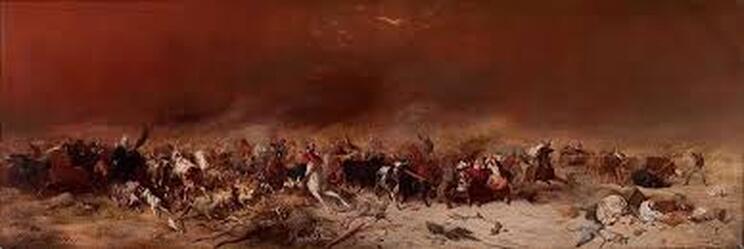 Black Thursday, February 6th 1851. Painting by William Strutt Black Thursday, February 6th 1851. Painting by William Strutt The definition of insanity is doing the same thing over and over again and expecting a different result. Albert Einstein. It’s not startling news that summer bushfires have been a feature of Australia since settlement. A devastating bushfire burnt nearly half of Victoria on ‘Black Thursday’ 6th February 1851. The loss of property and life was tragic and crippling then. Since 1851 we have become much more sophisticated in how we fight fires but the end result is still the same, loss of forests, loss of homes and loss of life. Why do we continue to make the same mistakes year after year, decade after decade and be surprised (horrified) when it’s always the same terrible outcome? We have failed to make country people safe in their homes and safe in their communities. 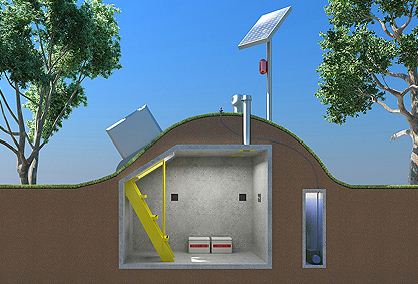 Victorian Government approved fire bunker Victorian Government approved fire bunker Making country communities safe needs; Fire-safe rating building codes. We know how to design and build fire-safe homes. Fire proof structures have been well tested under extreme fire conditions by the CSIRO. See this article on CSIRO testing and proposed new building standards More and more country people are installing fire safe bunkers to survive an extreme fire event. These are commercially available. I have a friend at Meredith who has had two bunkers installed. She is an avid reader, so the second bunker is for her collection of books. Read this recent blog (Feb 2020) on bunkers from the CSIRO with some useful links if you are thinking of installing one on your property Fire proofing modifications will add to building costs but they should be seen as essential to country living. Just as house design now has minimum permissible energy efficiency star ratings, buildings in the country should have minimal permissible fire ratings. All existing homes should have fire proofing retrofitted to make them safe. To avoid a mass exodus from country areas we have to make homes fire-safe These new costs should not have to be carried by people living in the country. They should be funded through government grants and interest free loans. It is the government’s responsibility to prevent a disaster stimulated exodus from country areas. People who have a choice will see county living as too risky for themselves and their families, unless they know they will be safe if the unthinkable happens. We need to encourage people to live in rural areas to take the pressure of our swelling cities. The extent and severity of bushfires can only become worse as global temperatures continue to rise, so its important that the choice of living in the country is a safe and viable one. See this article on innovative designs for bushfire safe housing. 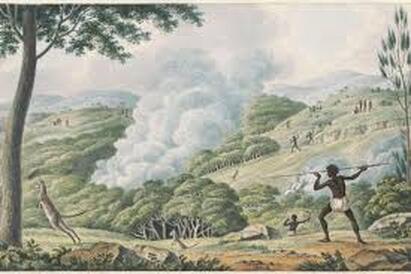 Being part of a Community Fireguard network saves lives Being part of a Community Fireguard network saves lives Building on past successes - social support systems Community Fireguard in Victoria saves lives, as does the Community Fire Units in NSW and the Community Fire Safe program in SA. These programs are voluntary but the people who participate are far better prepared. A Fire Authority trained guest speaker helps set up the framework and explains how it works. Members have property inspections and advice on how to improve fire safety. They set up phone support networks and have regular social meetings. They help each other prepare for a fire event both physically and emotionally. Country communities are known for their willingness to help neighbours in times of need. Wouldn’t formalising social support systems like these fit our country ethos? These social support programs should be broadened to include every family living in the country. It should be seen as an essential (dare I say compulsory) part of life in the bush. This link will take you to Victoria's Community Fireguard program Radical change to landscape and garden design around country homes Landscaping around homes can reduce fire risk. This means planting gardens and fire barriers with deciduous trees and watered gardens to create cool air in hot weather and enhance fire safety. Australian native trees are designed to burn. The myrtle family (E.g. eucalypts, melaleucas, bottlebrush and tea-tree) all have flammable oils in their leaves. Most native species have evolved with fire and need fire for their reproduction. Having flammable native plants close to homes is dangerous.  Native windbreaks can lessen fire risk by significantly reducing wind speeds but they have to be sited at sensible distance from homes and be well maintained. See this blog on 'Farm plantations can reduce bushfire risk' 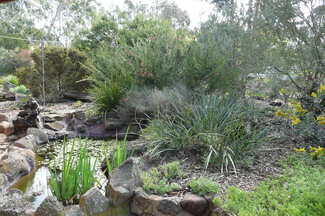 Native gardens are a delight near a home but they can add to the fire risk if they become overgrown and woody. See this blog on 'Managing native gardens for fire safety in southern rural Australia' 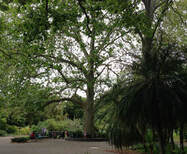 In contrast non-native deciduous trees and vines have a cooling effect on air and are difficult to burn. Deciduous trees will also trap and cool embers. Why aren’t deciduous trees used to protect homes? They could be strategically planted in the north and west fire danger sectors. See this blog on - Deciduous trees can provide crucial bushfire protection in rural Australia 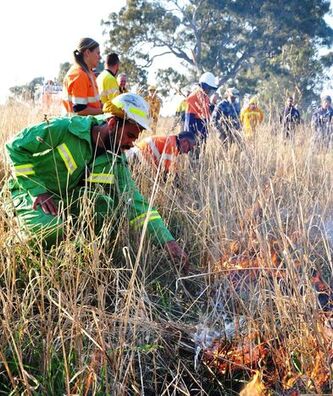 Traditional Owner burning at Bakers Lane Reserve, Teesdale Photo Tracey McRae Traditional Owner burning at Bakers Lane Reserve, Teesdale Photo Tracey McRae Radical change to fuel reduction burning. There is plenty of anecdotal evidence from the first settler diaries that devastating fires were rare when they arrived. ‘No newcomer reported the big killer fires typifying Sydney’s margins today’. (Gammage B. 2011, The Biggest Estate on Earth. How Aborigines made Australia. P242) The Australian bush that they found looked different to the bush that we know today. The plants were the same but the landscape was more open. It was like a ‘nobleman’s park’ because it was managed in a different way by Australia’s Traditional Owners. Traditional Owner (TO) burning is cool and sensitive to the vegetation and the wildlife that live there. It’s described by indigenous people as ‘healing the landscape’ because it nurtures life in all its diversity. It may seem simple, but it was a sophisticated and powerful tool that they used to keep the bush open and safer. With TO fuel reduction burns Air quality isn’t affected because cool burning gives off white smoke (mostly steam) and keeps most of the carbon on the ground. Hot fires produce black smoke which is full of carbon and unsafe to breath. Click here to read about a house and sheds that were saved by Traditional Owner burning in the Hunter Valley on January 6th 2020 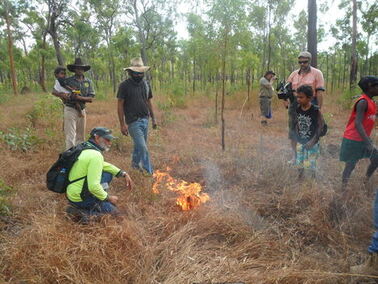 A Traditional Owner burn at Cape York where burning has been practiced for over 60,000 years. Photo Dale Smithyman Read more on the Traditional Owner burning method here  This blog describes a Traditional Owner cool burn Ancient Australian culture - the traditional skill of cool burning  R. Buckminster Fuller was an American engineer/architect/creative thinker. He is famous for using nature as his teacher, designing the geodesic dome, promoting doing more with less and the concept of 'spaceship earth' having limeted resources R. Buckminster Fuller was an American engineer/architect/creative thinker. He is famous for using nature as his teacher, designing the geodesic dome, promoting doing more with less and the concept of 'spaceship earth' having limeted resources After the fires we will be ready to talk about change? There is a lot of denial, anger and compassion being expressed by Australians about this current bushfire tragedy and we know it’s not over yet. When the nation has worked through its grief it will be appropriate to do some ‘rational analyses’ of the extreme disaster we have witnessed. We have to move beyond the national attitude that the fire season has to be endured. It’s time to see the practical benefits of Traditional Owner vegetation management practices and begin to adopt them. Home and property designs should be upgraded to provide a safe refuge. We have to start preparing for a warming climate with its predicted weather extremes. While we will always need trained volunteers to fight fires, we should also be transitioning to a large trained workforce, lead by indigenous men and women, to conduct TO cool burns. This TO method of burning would be part of a new philosophy of working with nature rather than 'fighting' against her. Nature can be a devastating enemy as we know. Wouldn’t we prefer nature to become our powerful ally?
22 Comments
Andy Marshall
4/1/2020 09:35:24 pm
Hello Steve.
Reply
Steve
5/1/2020 12:17:19 pm
G'day Andy,
Reply
Dale Smithyman
7/1/2020 08:47:52 am
Great blog Steve.Planning another TO burn at Bakers Lane for autumn this year.
Reply
Steve
7/1/2020 09:23:23 am
Thanks Dale,
Reply
Gib Wettenhall
7/1/2020 11:45:26 am
Timely blog, Steve, especially as we left Mallacoota under a massive pyroclastic pillar of smoke in the nick of time before the bushfire engulfed the town.
Reply
Steve
7/1/2020 08:40:33 pm
Wow Gib you did have a close escape and that Pyroclastic pillar of smoke sounds very threatening.
Reply
Terry Laybourne
11/1/2020 03:14:34 am
G'day all, after just experiencing the bushfires that almost wiped out our small community of Sarsfield, Victoria and about 80% of our 5 Ha property (luckily our house and garden shed have survived) now is the time to reassess our setup. Thanks for the thought provoking ideas in this article - now off to contemplate!!!
Reply
Steve
11/1/2020 11:59:38 am
Thanks for your positive feedback Terry, but what a distressing tragedy your small community at Sarsfield has experienced. It must be shocking for you to look out at your own blackened landscape.
Reply
Bruce
13/1/2020 12:37:39 pm
Steve,
Reply
Steve
13/1/2020 01:02:02 pm
Hi Bruce,
Reply
Anna
14/1/2020 01:14:20 pm
Thanks for this: timely & comprehensive summary of the necessaries. Please see also David Bowman’s work on bigger city / urban fringe reshaping & protection - establishment of green firebreaks (limited role/capacity of hazard reduction burns in future), changing timing of summer/school holidays to feb/March not dec/Jan for safety in national parks etc etc etc. He has the ear of Hobart City Council and is probably the pre-eminent aust fire geographer. Just did amazing panel discussion with palawa (tas aboriginal) folk :) @ballawinne festival.
Reply
Steve
14/1/2020 06:11:30 pm
Thanks Anna,
Reply
terryfinley
17/1/2020 01:29:05 pm
great article, great to see no politics
Reply
Steve
17/1/2020 03:09:09 pm
Thanks Terry,
Reply
Gina
17/1/2020 06:28:12 pm
Hi Steve
Reply
Steve
25/1/2020 11:17:30 am
Thanks Gina for your well thought through comments.
Reply
David Sinclair
26/1/2020 09:30:36 pm
Hi Steve,
Reply
Steve
29/1/2020 12:03:10 pm
Hi David,
Reply
Peter Van Haeff
29/1/2020 11:11:25 am
Hi Steve, thanks for your concise and informative conversation relating to bushfires, it's a conversation we definitely need to have in order to minimise the impact of these increasingly frequent and more intense events.
Reply
Peter Van Haeff
29/1/2020 11:23:29 am
Yes, it's me again, I didn't quite finish my previous comment but it is rather lengthy so will leave it at that.
Reply
Steve
29/1/2020 12:44:19 pm
Hi Peter,
Reply
11/8/2022 01:29:17 pm
Sotera’s service offering in performance based design is proudly backed by Dr Paul Clancy who was involved in the introduction of performance based fire engineering to Australia.
Reply
Leave a Reply. |
Click on the image below to discover 'Recreating the Country' the book.
Stephen Murphy is an author, an ecologist and a nurseryman. He has been a designer of natural landscapes for over 30 years. He loves the bush, supports Landcare and is a volunteer helping to conserve local reserves.
He continues to write about ecology, natural history and sustainable biorich landscape design. 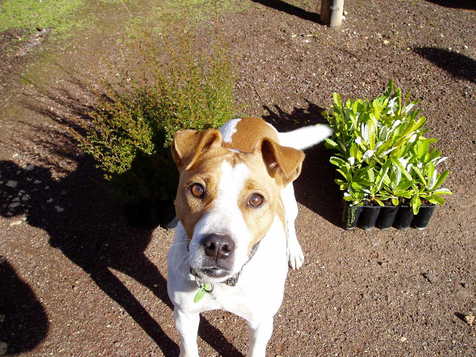
|
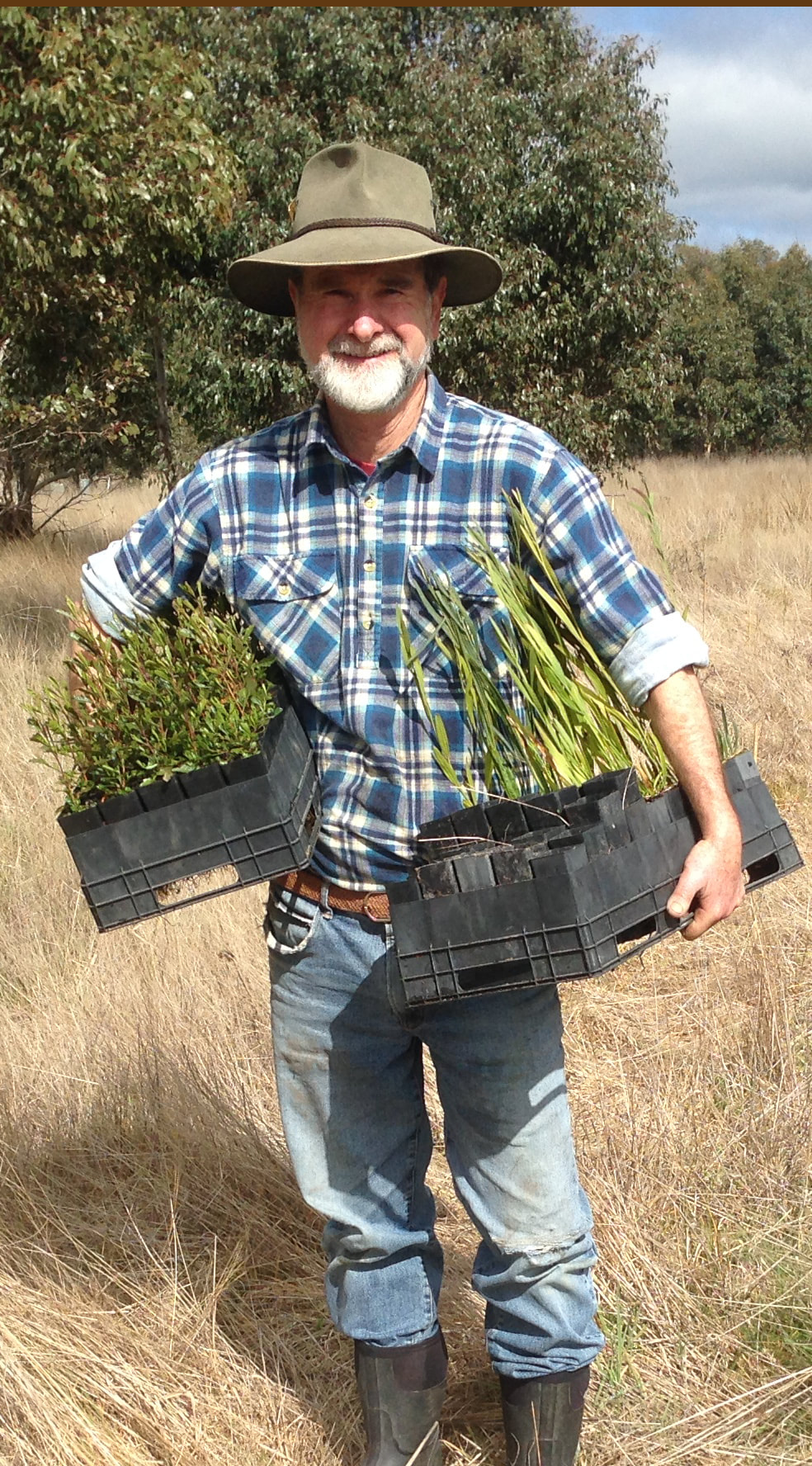

 RSS Feed
RSS Feed
